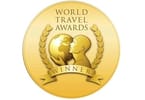Asian governments need to move faster to lift air restrictions to spur competition for carriers such as Malaysian Airline System Bhd. and Garuda Indonesia, an industry body said.
Full liberalization or “open skies” may be achieved in eight years, as some governments start to free some air routes, Giovanni Bisignani, director general of the International Air Transport Association, or IATA, said in a Bloomberg Television interview yesterday.
Governments in Indonesia, Malaysia and the Philippines restrict landing rights, shielding national carriers from competition. Greater access will push fares lower, spur air traffic and may encourage mergers, Bisignani said.
“I would like to see the bilateral system in a museum,” Bisignani said in Singapore. “We cannot sell our product where the market is and we cannot merge and consolidate. It’s not easy to consolidate because of ownership issues.”
A fully liberalized Asian air-travel market could generate as many as 1,600 low-cost routes by 2015, according to Airbus SAS. Asia’s budget airlines will have a combined fleet of 1,300 single-aisle aircraft by 2025, compared with 236 now, according to Airbus, the world’s largest maker of commercial aircraft.
“Asia will emerge as a very competitive market place,” said Derek Sadubin, chief operating officer of Sydney-based Centre for Asia-Pacific Aviation. “We will see different branding among the airlines, more low-cost units being set up to fend off rising competition and more new entries. Fares will generally be under pressure.”
The 10-member Association of Southeast Asian Nations has pledged to allow unlimited access between their capital cities starting December and to fully liberalized aviation services by 2015.
Budget Carriers
Governments in Malaysia and Singapore started lifting restrictions by giving budget carriers such as AirAsia Bhd., Tiger Airways Pte and Jetstar Asia limited access on flights between their capital cities this month.
Singapore and the U.K. have agreed to remove all restrictions on air services from March, which will give Singapore Airlines Ltd., Asia’s most profitable carrier, unlimited flights. In return, British carriers will have similar access in Singapore.
The U.S. agreed with the European Union last year to deregulate trans-Atlantic travel and reached a similar deal with Australia this month to end restrictions on flights between the two countries.
Combined profits at global airlines may decline to about $5 billion this year, hurt by higher oil prices and slowing economic growth this, according to IATA, which represents more than 240 carriers worldwide. That’s down from an earlier estimate of $9.6 billion and 11 percent lower than in 2007.
Profitability of Asian carriers declined to $700 million last year from $1.7 billion in 2002, Bisignani said today in a speech at the Singapore Air Show. Asian capacity this year will expand by 8.8 percent with 427 deliveries and another 450 aircraft in 2009. Demand will grow 6.4 percent, he said.
“This is not a recipe for long-term growth,” Bisignani said.
bloomberg.com






















